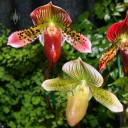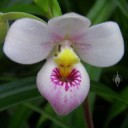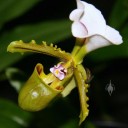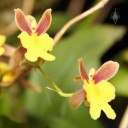King Phillip Came Out For Green Seeds
Posted May 22nd, 2012 by Marc CohenCategories: Orchid Names
I didn’t learn much in my high school biology class, but many years later, I can still remember one thing: King Phillip Came Out For Green Seeds. That sentence, stuck in my head thanks to the power of mnemonics, is a useful memory trick for the levels of scientific classification of all living things: Kingdom, Phylum, Class, Order, Family, Genus, Species. Botanists usually say “division” instead of “phylum,” but that messes up my sentence, so I’m sticking with what I know. In addition, there are many sublevels, but these are the main groupings.
Why is this relevant to orchid names? These classifications show orchid relations to each other and to other plants. Orchid name tags show the bottom levels in the list, the genus and species, i.e. Dendrobium nobile. Species which are in the same genus, i.e. Dendrobium, are closely related to one another. They may crossbreed to produce hybrids, and may have similar care needs. Other closely related orchids can also produce hybrids, but none can crossbreed outside its family.
Read the rest of this post »
























